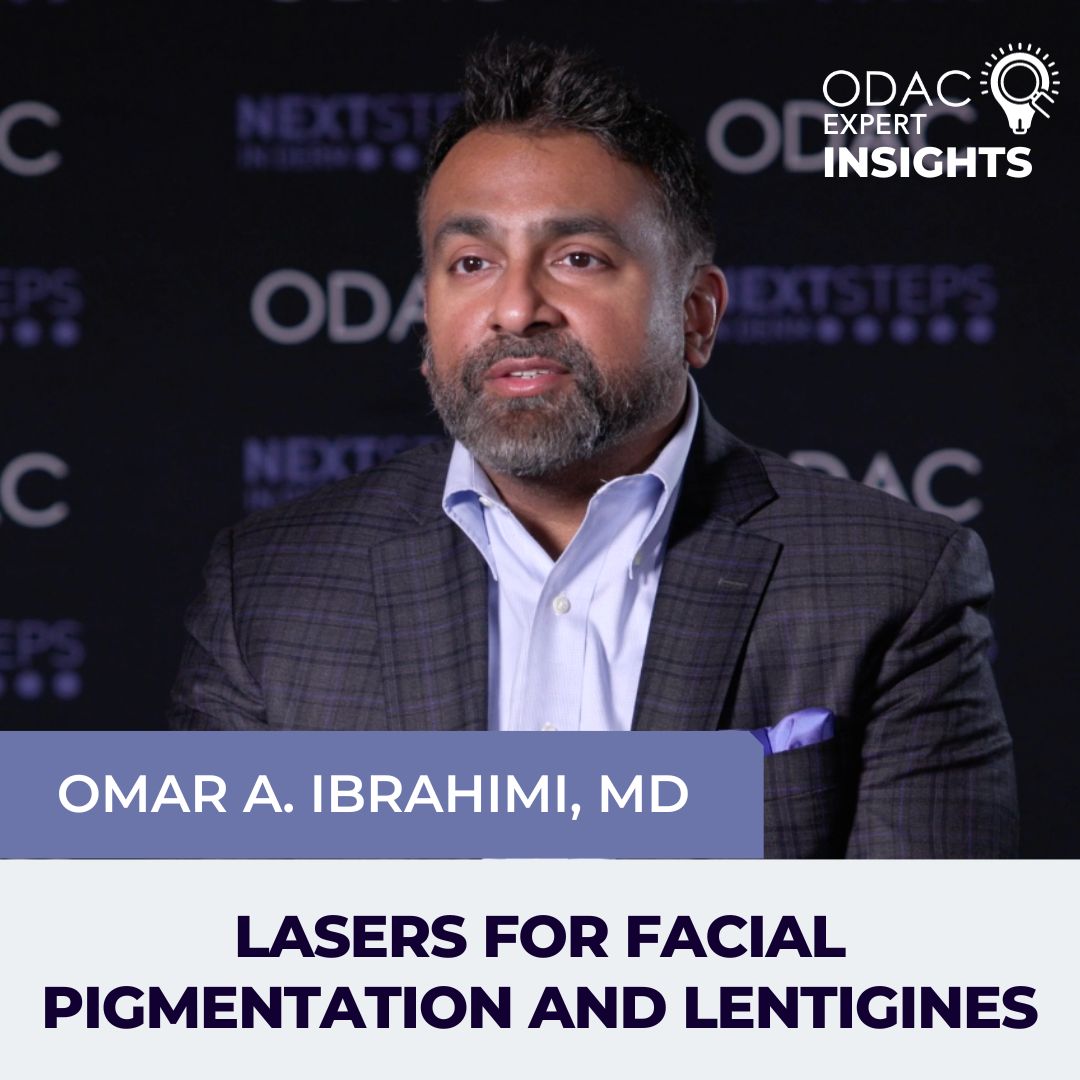Next Steps in Derm, in partnership with ODAC Dermatology, Aesthetic & Surgical Conference, interviewed Dr. Omar Ibrahimi, a laser and cosmetic dermatologist, and Mohs surgeon in private practice in Stamford, Conn. Dr. Ibrahimi has about 40 different devices in his practice. Find out his favorites for treating lentigines, and how a patient’s assessment determines his choice of device. Watch as Dr. Ibrahimi shares why you should give patients referred to your practice a second glance, and why you should always keep biopsy as an option before treatment.
Further Reading
If you want to read more about using lasers to treat lentigines, check out the following articles published in the Journal of Drugs in Dermatology:
ABSTRACT
Background: The safety and effectiveness of high-intensity precision radiofrequency (RF) for rejuvenating the aging neck and face, and of fractional laser therapy for treating photodamaged skin have each been previously demonstrated.
Objective: To assess the effects of combining high-intensity precision RF and fractional laser therapy for treating the aging face and neck. Methods and Materials: Subjects (N=19) with Fitzpatrick skin types I to VI and mild-to-moderate solar elastosis and sun or age-related pigmentation on the face and/or neck were sequentially treated with high-intensity precision RF and fractionated laser devices during the same session. Three sessions were completed 30 days apart. Assessments were made 90 days after the last treatment.
Results: Both Clinician and Subject Global Assessment of Improvement scores indicated clinical improvement (n=16, 84%) or no change (n=3, 16%) in skin quality. Clinical improvement was also observed in 16 subjects (68%) in masked assessment. Most subjects (90%) noted improved skin quality and 74% expressed at least some satisfaction with their treatment results. The most common adverse events were erythema (n=57, 45%) and edema (n=45, 35%). Conclusion: The results of this study establish the safety and effectiveness of combined treatment with a 1927 nm thulium laser and a high-intensity precision RF device.
ABSTRACT
Background: Fractional laser treatment was introduced in 2004 as a non-invasive technique to treat sun-damaged and aging skin. Since then, numerous ablative and non-ablative photothermolysis technologies and devices have been introduced, increasing the options for clinicians and patients but also increasing the complexity regarding which system to use and the techniques to optimize outcomes. No two devices are the same and the user-manuals preset dosimetry does not address many clinical situations, which can create confusion for new and inexperienced users.
Methods: An online survey addressing use of a 1550 nm /1927 nm dual wavelength, non-ablative, fractional laser was sent to eight (8) US board certified dermatologists with extensive experience in the use of the device. The survey included 39 questions, addressing experience, best practices and recommendations for use.
Results: The survey data suggests that the device can be used to treat patients of all ages and skin types for indications including photoaging and photodamage, periorbital wrinkles, freckles, (ephelides), solar lentigines, poikiloderma, scarring due to acne or surgery. It can be used on both facial and non-facial areas, including neck, chest, hands, arms, abdomen, legs, and buttocks. Unexpected and adverse effects were rarely reported and those that did were mild and transient.
Conclusions: This position paper provides practical real-world guidelines resulting from a small survey of experienced users, for new and early uses of the novel 1550 nm /1927 nm dual wavelength, non-ablative, fractional laser.
Did you enjoy this video interview? Find more here.
TAGS OMAR IBRAHIMI, MD; SOLAR LENTIGO; LASERS; AGING SKIN

